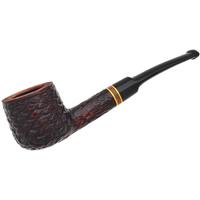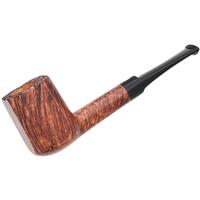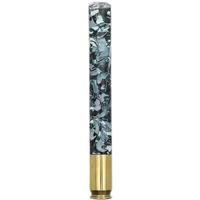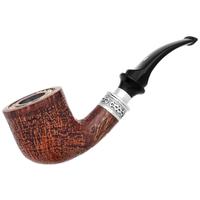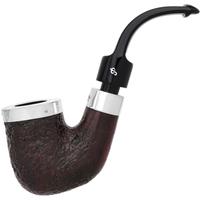Discontinued Blends?
- Thread starter cigrmaster
- Start date
You are using an out of date browser. It may not display this or other websites correctly.
You should upgrade or use an alternative browser.
You should upgrade or use an alternative browser.
- Status
- Not open for further replies.
You and me both, Harris!
.....also from this side of the pond:-
- Hawky mentioned Velvan, but Mick McQuaid (Plug and Square Cut) are now also gone.
- All of Glenn Quelch's wonderful GQ Tobaccos blends are gone. GQ Tobaccos is now trading again, but without him at the helm and without his boutique blends.
- Bulwark Flake
- Irish Slices
The latter two blends were discontinued without warning......poof.....gone! Two of my favourite 'Olde Brit-tasting' baccies!
I did manage to stock up on GQ and McQuaid before they went under.
.....also from this side of the pond:-
- Hawky mentioned Velvan, but Mick McQuaid (Plug and Square Cut) are now also gone.
- All of Glenn Quelch's wonderful GQ Tobaccos blends are gone. GQ Tobaccos is now trading again, but without him at the helm and without his boutique blends.
- Bulwark Flake
- Irish Slices
The latter two blends were discontinued without warning......poof.....gone! Two of my favourite 'Olde Brit-tasting' baccies!
I did manage to stock up on GQ and McQuaid before they went under.
Thank you, didimauw! Heavily into the old Brit (GH&Co, SG and Germain) flakes that I cut my teeth on about 20 years ago.
[MacBaren's supply of Syrian latakia has got to be pretty darned low. They had 2 or 3 years supply left as of the Chicago Pipe Show of 2015.]
And it looks like the last batch of Syrian they are using is different and of lower quality than the one previously used. So I really think we have to consider all Syrian blends gone now.
And it looks like the last batch of Syrian they are using is different and of lower quality than the one previously used. So I really think we have to consider all Syrian blends gone now.
Thanks for all of the welcome back guys, it really means a lot to me. The one thing of being away for so long is the extra year plus my tobacco has aged. I opened one of my containers that had a dozen or so open tins in it and the tobacco was as fresh as when I put it in.
I have a bunch of Rotary Navy and Klondike Gold. I am so glad I stocked up as they are a couple of my favorites.
Jesse or anyone else, have you smoked the GL Pease Stonehenge? Is it as good as it use to be?
I have a bunch of Rotary Navy and Klondike Gold. I am so glad I stocked up as they are a couple of my favorites.
Jesse or anyone else, have you smoked the GL Pease Stonehenge? Is it as good as it use to be?
Harris, I think you can buy the Stonehenge with confidence if you were able to handle the older version. There is a very small amount of red Virginia in it, so you need to take that into consideration. Here's my review if it'd help you:
The various Virginias offers a range of flavors: plenty of fermented stewed ripe and tangy dark fruit with a lot of earth, some tart and not tart citrus, and a few grass notes, along with a minor hits of tea and vinegar. They also provide a mild floral quality which is slightly more obvious in the first half than it is later on. They form the major base of the blend. The touch of Malawi burley has some earth, nuts, toast and wood far in the background. The deep raisins, prunes, plum and moderate spice from the Saint James perique continually underscores the experience. The cocoa topping is lightly applied, but works well in concert with the Lakeland-esque additive. These toppings do tone down the varietals a mite, though the Lakeland recedes some in the last third of the bowl, more so than the cocoa, which weakens slightly. No chance of bite or harshness, and sports no dull moments. The nic-hit is a step closer to medium than it is to mild. The flakes are a little moist, but need no dry time. Burns a little slow, and fairly cool with a rather consistent taste that also has a little creaminess. Leaves just a little moisture in the pipe, and requires some relights. Has a pleasant after taste that lingers. Not an all day smoke, but it’s a repeatable one, provided you can find a tin.
As for the new version, I find few differences. The fermentation from the Virginias is barely present, but that was due to the aging process anyway. The Lakeland essence is a tad stronger and the cocoa is a little more more obvious than that, and a bit more prominent than the 2001 version. Again, I attribute this to the age of the original as related to fresh. As with the older production, the Lakeland loses a little of its impact by the last third of your smoke, and the cocoa hardly does (same as the 2001 sample). The only other thing I observe is that the perique is tad less noticeable here, but I’d attribute that to the freshness of the blend because the toppings of the old were muted just a little over time, and their full influence when fresh would naturally reduce the effectiveness of some varietals that are added in small amounts. The Malawi burley is moderately less affected. For the most part, the tobaccos deliver as they did in the past. The bottom line is that the differences are due to the aging process, and not a change in recipe as the variables aren’t quite as obvious as this review makes them seem in cold print.
The various Virginias offers a range of flavors: plenty of fermented stewed ripe and tangy dark fruit with a lot of earth, some tart and not tart citrus, and a few grass notes, along with a minor hits of tea and vinegar. They also provide a mild floral quality which is slightly more obvious in the first half than it is later on. They form the major base of the blend. The touch of Malawi burley has some earth, nuts, toast and wood far in the background. The deep raisins, prunes, plum and moderate spice from the Saint James perique continually underscores the experience. The cocoa topping is lightly applied, but works well in concert with the Lakeland-esque additive. These toppings do tone down the varietals a mite, though the Lakeland recedes some in the last third of the bowl, more so than the cocoa, which weakens slightly. No chance of bite or harshness, and sports no dull moments. The nic-hit is a step closer to medium than it is to mild. The flakes are a little moist, but need no dry time. Burns a little slow, and fairly cool with a rather consistent taste that also has a little creaminess. Leaves just a little moisture in the pipe, and requires some relights. Has a pleasant after taste that lingers. Not an all day smoke, but it’s a repeatable one, provided you can find a tin.
As for the new version, I find few differences. The fermentation from the Virginias is barely present, but that was due to the aging process anyway. The Lakeland essence is a tad stronger and the cocoa is a little more more obvious than that, and a bit more prominent than the 2001 version. Again, I attribute this to the age of the original as related to fresh. As with the older production, the Lakeland loses a little of its impact by the last third of your smoke, and the cocoa hardly does (same as the 2001 sample). The only other thing I observe is that the perique is tad less noticeable here, but I’d attribute that to the freshness of the blend because the toppings of the old were muted just a little over time, and their full influence when fresh would naturally reduce the effectiveness of some varietals that are added in small amounts. The Malawi burley is moderately less affected. For the most part, the tobaccos deliver as they did in the past. The bottom line is that the differences are due to the aging process, and not a change in recipe as the variables aren’t quite as obvious as this review makes them seem in cold print.
Jim, thanks for the great review. I did smoke a few bowls of the original way back when and did not care for it due to the Lakeland essence. I am pretty sure I would not care for this newer version. I bet a whole lot of people are happy though as the older version was pretty popular.
I love it! And for fun, look what you missed during your hiatus. :mrgreen:have you smoked the GL Pease Stonehenge? Is it as good as it use to be?
http://pipesmagazine.com/forums/topic/campd-just-teased-re-release-of-stonehenge-on-6-23-17
chasing, thanks for the link. I just checked and they have 95 left, do you think that is from the original run? Did other retailers get it or was it an exclusive? I am going to buy one tin just to try it, hell maybe my distaste for Lakelands is gone after my hiatus.
Have no fear, only very mildly lakeland.hell maybe my distaste for Lakelands is gone after my hiatus.
So what is the deal with the FDA, are they trying to totally shut down pipe tobacco?
Also what is up with the EU and Britian? Where is the rumor about Dunhill shutting down coming from?
Also what is up with the EU and Britian? Where is the rumor about Dunhill shutting down coming from?
Essentially the FDA is trying to shut everything down by regulating tobacco and tobacco products (pipes and accessories) out of business. The good news is, after several law suits, the impending regulations have been pushed back to 2021 instead of 2018.
Dunhill (British American Tobacco = BAT) actually released a statement saying that they will be discontinuing their line of tobacco. It's understood that Dunhill is trying to distant themselves from tobacco which is why they've created White Spot. Dunhill as a designer doesn't want to be associated with the industry. This is how I took the news anyway.
Very sad business really.
Dunhill (British American Tobacco = BAT) actually released a statement saying that they will be discontinuing their line of tobacco. It's understood that Dunhill is trying to distant themselves from tobacco which is why they've created White Spot. Dunhill as a designer doesn't want to be associated with the industry. This is how I took the news anyway.
Very sad business really.
- Status
- Not open for further replies.



